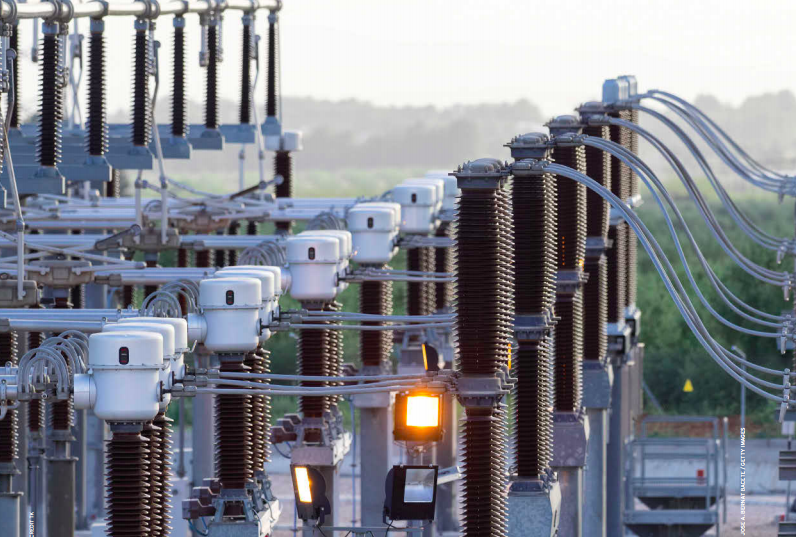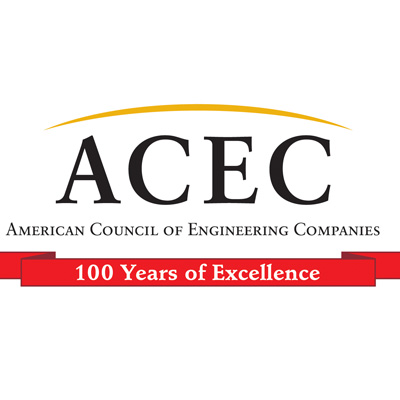AMERICAN COUNCIL OF ENGINEERING COMPANIES
Written by Gerry Donohue, ACEC’s senior communications writer
 Engineering firms operating in the power transmission sector are brimming with optimism about the market. The sector has almost doubled in size since 2011, and, while the market is expected to flatten, it still promises to stay strong for the next several years.
Engineering firms operating in the power transmission sector are brimming with optimism about the market. The sector has almost doubled in size since 2011, and, while the market is expected to flatten, it still promises to stay strong for the next several years.
“The market has been outstanding,” says Robert Mechler, director of T&D project development at Black & Veatch. “The amount of spending has gone up tremendously, and the forecast remains robust for the next four to six years.”
The overall power sector is forecast to be one of the strongest A/E/C markets through 2022, with industry analyst FMI Corporation projecting average annual growth of 4.5 percent. “Within the sector, transmission is the healthiest portion,” says Bill Shelley, senior vice president for power at Stantec. “We have seen 22 percent growth since 2015 in our transmission, substation and distribution revenues, and we expect that growth to keep going.”
Replacing and updating system assets accounts for a lot of that growth. “Utilities are updating and strengthening the existing infrastructure, upgrading poles, improving conductors and raising substations out of flood plains,” Shelley says.
Natural disasters have also had a big impact. “There has been strong investment needed due to hurricanes and other weather impacts,” Mechler says. “When natural disasters do their damage and things get knocked down, we are going back and putting in something that is more robust and resilient.”
One of the biggest drivers, according to Ben Edgar, business development manager for renewables and distributed energy resources at Black & Veatch, has been the utilities shifting their investment dollars from generation to transmission. “The utility-scale generation market does not look as good as it did in the past, so they are turning to transmission,” says Edgar.
Transmission systems are regulated and can provide annual returns ranging from 7 to 12 percent. “That is a pretty good return over the 40-year life of those assets,” Edgar says. “Why would you not invest in transmission?”
CHANGING MARKET
Two market trends that are driving demand for new transmission lines are renewable energy and distributed energy resources.
“Energy policy and customer preference are really pushing renewable energy,” says Blair Loftis, national director of power generation and transmission at Terracon. “Twenty-nine states have renewable energy portfolio standards requiring that they raise the percentage of power generated by renewables, and a lot of customers have turned the corner and are willing to pay more for cleaner energy.”
As a result, Loftis expects the wind industry to blow past its target of 100 gigawatts of installed capacity by 2020 and solar power to stay close to the 59 percent annual growth rate it has enjoyed over the past 10 years.
Because the best locations to generate solar and wind power are often far from the load centers, the continued expansion of renewable power will boost the need for transmission lines. Texas recently invested $7 billion to build transmission lines from the Panhandle to its urban areas.
The growth of distributed energy resources also presents a lot of opportunities for engineering firms. “Utilities are working on figuring out how to handle loads from different types of sources, changing from a one-directional business model to a future that will be totally bi-directional,” says Shelley.
While these projects do not tend to be utility-scale, they are plentiful, and the trend line is accelerating.
Edgar points to one likely application: “We have gotten to the point where 99.9 percent reliability of the grid is not good enough. We will see utilities incorporating distributed assets to strengthen reliability and complement transmission.”
Download full article (PDF): Power Transmission Sector Exhibiting Strong, Durable Growth
Download full November/December issue of Engineering, Inc.
 About the American Council of Engineering Companies
About the American Council of Engineering Companies
www.acec.org
The American Council of Engineering Companies (ACEC) is the voice of America’s engineering industry. Council members – numbering more than 5,000 firms representing more than 500,000 employees throughout the country – are engaged in a wide range of engineering works that propel the nation’s economy, and enhance and safeguard America’s quality of life. These works allow Americans to drink clean water, enjoy a healthy life, take advantage of new technologies, and travel safely and efficiently. The Council’s mission is to contribute to America’s prosperity and welfare by advancing the business interests of member firms.
Tags: ACEC, American Council of Engineering Companies, Engineering Inc., Power transmission, Renewable Energy, Solar Power, Wind Power






 RSS Feed
RSS Feed